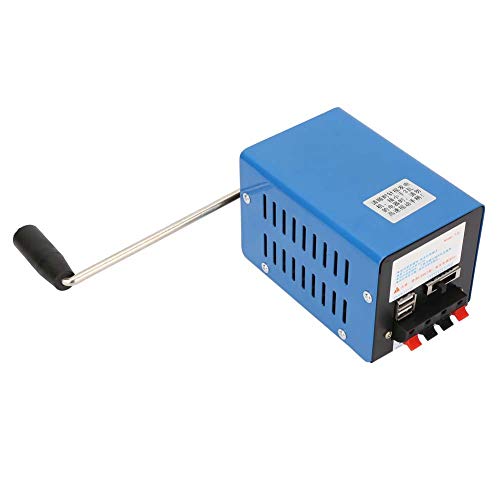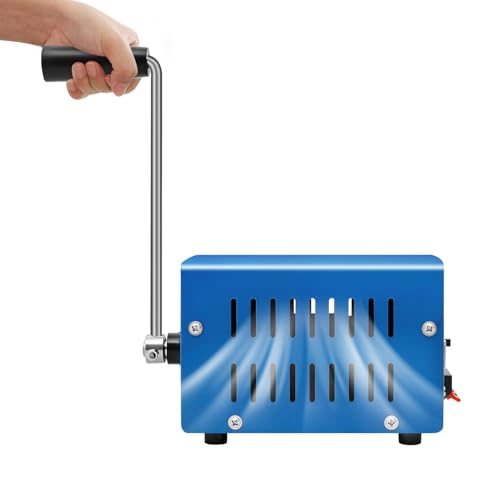Understanding Hand-Crank Generators: What They Are and How They Work
What is a Hand-Crank Generator?
A hand-crank generator is a device that converts mechanical energy into electrical energy through manual effort. Simply put, when you turn the crank, it creates electricity. This process is facilitated by a rotor spinning inside a magnetic field, generating power much like a bicycle dynamo. These generators are compact and typically portable, making them useful in situations where conventional power sources are not available.
How Do They Work?
The operation of a hand-crank generator is straightforward. As you turn the crank, a mechanism converts your physical motion into electrical energy. This energy can be used to charge batteries, power small devices, or provide emergency lighting. Depending on the design, the energy output can vary, so it’s essential to understand how much power you’ll need for your intended application.
Choosing the Right Hand-Crank Generator for Your Needs: A Buyer’s Checklist
Assessing Your Power Requirements
Begin by considering what you want to power. Are you charging a phone, running LED lights, or powering a radio? Different use cases will dictate the output you need. A clear understanding of your power demands will help you select a generator that can meet those requirements effectively.
Portability and Weight
Look for a model that suits your lifestyle. If you plan to take it camping or use it in emergencies, weight and size matter. Choose a lightweight, compact generator that’s easy to carry without sacrificing durability.
Ease of Use
Manual generators can vary in terms of how user-friendly they are. Some models require a consistent, strong effort to produce power, while others are designed for easier cranking. Pay attention to user reviews and product specifications to gauge how easy a generator will be to operate.
Build Quality and Reliability
Select a generator made with robust materials. A durable construction ensures that it can withstand regular use and harsh conditions, particularly if you’re planning to use it outdoors. Look for feedback on a generator’s long-term reliability.
Top Features to Consider: Ensuring Functionality and Durability
Output Voltage and Compatibility
It’s crucial to know the output voltage of your chosen generator. Ensure that it matches the devices you plan to use. Some models offer multiple output options, allowing you to power various devices without the worry of compatibility.
Built-in Battery Storage
Consider whether the generator has built-in battery storage. This allows you to store energy for later use, giving you more flexibility and letting you maximise battery life for your devices. Some models come equipped with additional features like LED indicators that show how much power is available.
User-Friendly Design Features
Look for features such as ergonomic grips for better handling during use. A well-designed crank can make operation less strenuous. Some generators even include mechanisms that reduce friction, leading to smoother cranking and increased efficiency.
Practical Uses for Hand-Crank Generators: Everyday Scenarios
Navigating Power Outages
Imagine being at home during a sudden power cut. A hand-crank generator can keep essential devices running, like phones and flashlights, ensuring you stay connected and safe until power returns.
Camping Adventures
On a camping trip, a hand-crank generator proves invaluable. It can supply power to light up your tent, charge your camera, or even operate a small electronic cooking appliance, making your outdoor experience much more comfortable.
Emergency Preparedness
In emergencies like natural disasters, having a hand-crank generator can be a lifesaver. It provides power when conventional methods fail, allowing you to charge crucial devices or keep basic lighting available.
Maintenance Tips for Longevity: Keeping Your Generator in Top Shape
Regular Inspections
Inspect your generator periodically for any signs of wear and tear. Check the crank mechanism for any stiffness or abnormalities. Addressing small issues early can prevent bigger problems later on.
Proper Storage Techniques
If you’re not using your generator often, store it in a dry place to prevent rust and corrosion. Keeping it protected from the elements ensures it remains functional when you need it.
Routine Cleaning
After use, clean the device to remove dirt and debris that may interfere with its performance. Regular cleaning extends the lifespan of your generator and maintains its efficiency, ensuring that it is ready when you need it.























